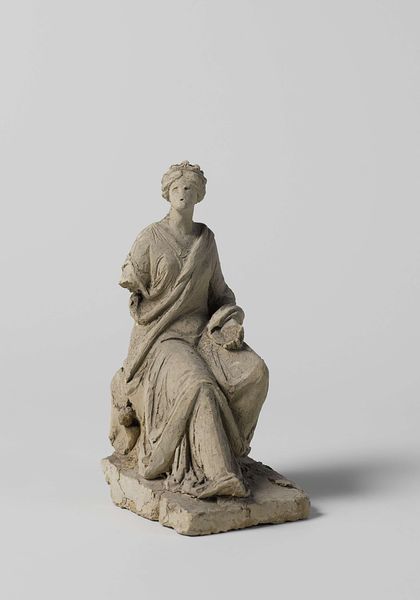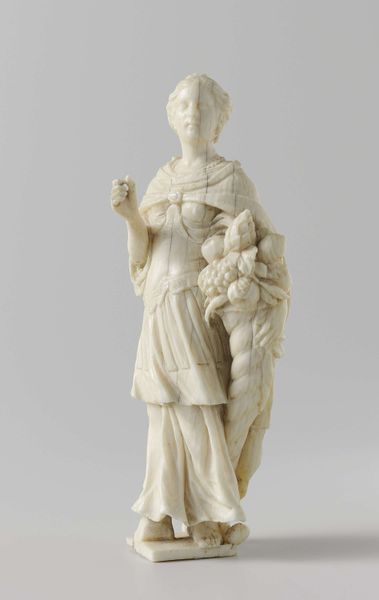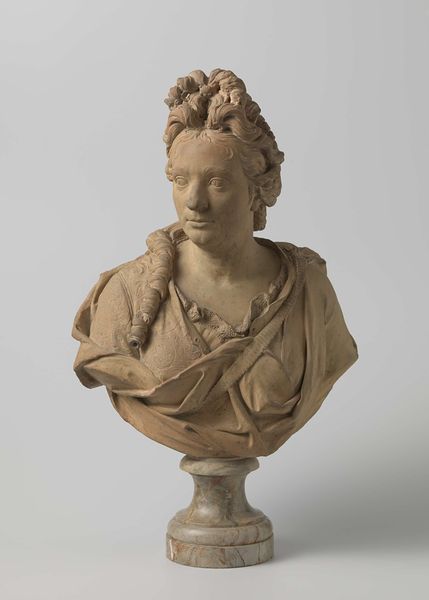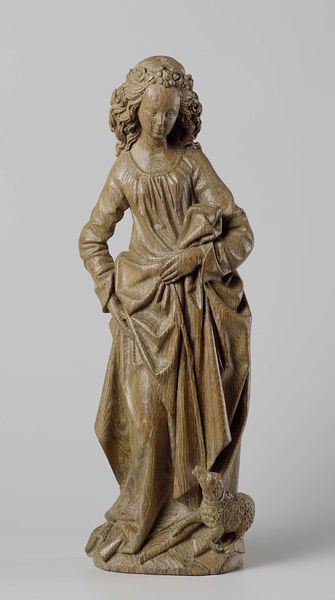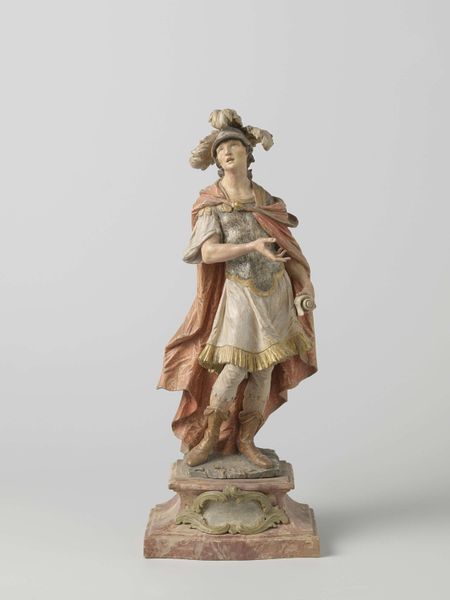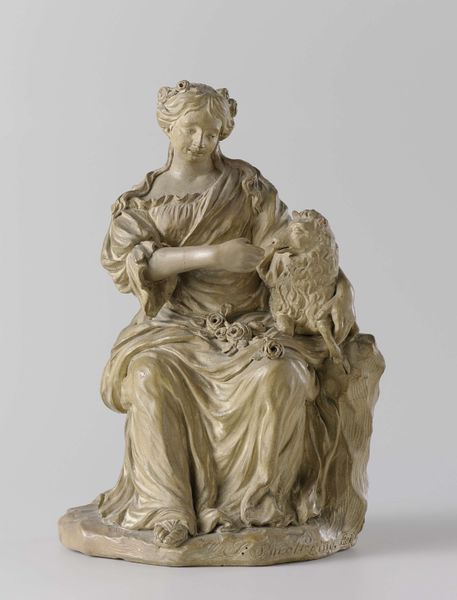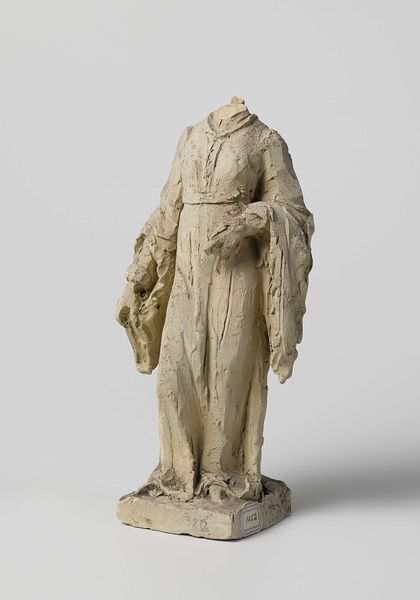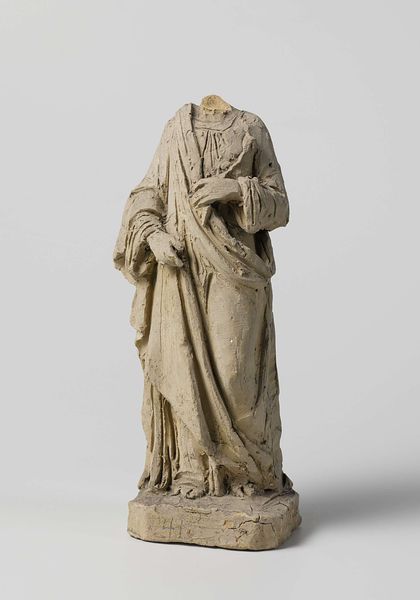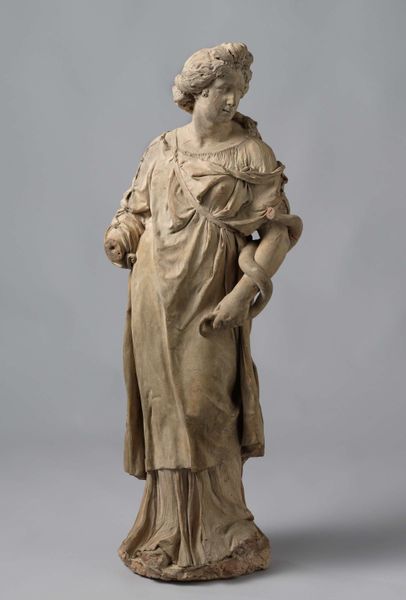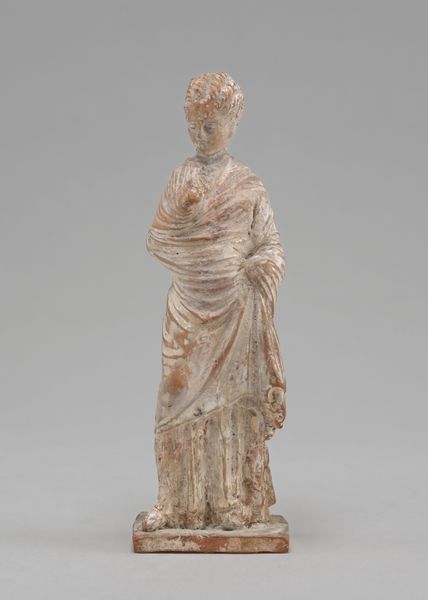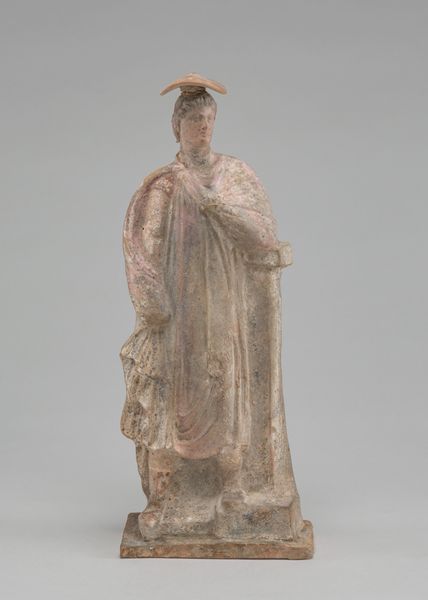
sculpture, plaster, wood
#
portrait
#
neoclacissism
#
sculpture
#
figuration
#
sculpture
#
plaster
#
wood
#
history-painting
#
academic-art
Dimensions: height 19 cm, width 7.9 cm, depth 7 cm, height 20.5 cm, width 13.3 cm, depth 12.5 cm
Copyright: Rijks Museum: Open Domain
Eugène Lacomblé created this terracotta sculpture, entitled ‘De Industrie,’ a symbol of industry, sometime in the 19th century. The moist clay was carefully modeled by hand. See how the soft material has allowed the sculptor to render the allegorical female figure's draped clothing with deep folds? This allows a dramatic play of light and shadow. Note the wispiness of the wool at her feet, in contrast to the heavy chain she holds in her left hand. Terracotta has always had a somewhat ambivalent status, being closely linked to vernacular traditions, yet also associated with the fine arts, especially sculpture. Here, Lacomblé is very much engaged with social issues of labor, politics, and consumption. The industrial revolution brought unprecedented shifts in labor practices, and this sculpture serves as an interesting lens through which to consider industry’s impact on society. By considering the materials, the making processes, and the social context of ‘De Industrie,’ we can fully understand the meaning of the artwork, and challenge traditional distinctions between fine art and craft.
Comments
No comments
Be the first to comment and join the conversation on the ultimate creative platform.
